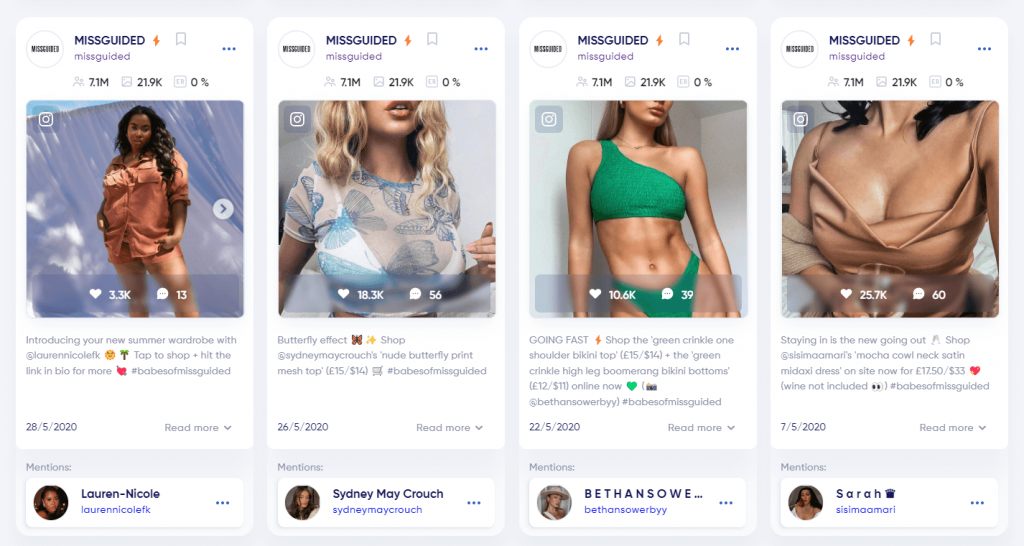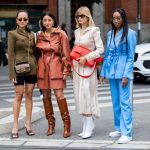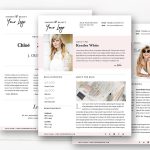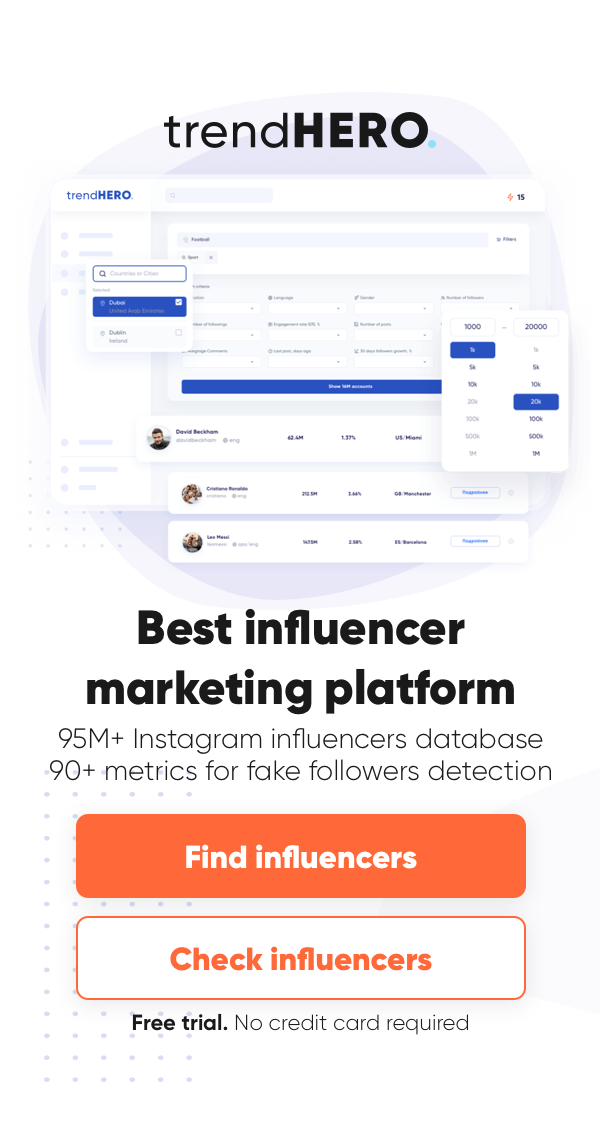- Home
- BLOG
- Influencers
- 25 Brands that Work with Influencers
In the era of social media, marketing changes and evolves at a dramatic speed. Users don’t trust mass media anymore. In-your-face advertising annoys them. The majority of marketers are aware of the simple truth: ads work when they don’t look like ads. And it’s the truth brands that collaborate with bloggers make good use of.
Nowadays, it’s vital for influencer marketers to see what other brands do. So, we used trendHERO Ad posts feature to look for brands that collaborates with influencers. In that way you can see if your competitors works with someone or just find insights. For example, Missguided:

Using this tool you can find out:
- what brands work with influencers,
- what type of influencer they need, (if they work with micro influencers),
- what type of campaigns they create and promote.
We prepared a list of brands that use influencer marketing on a regular basis.
Сompanies that work with influencers
1. Asos
Asos takes online shopping to a whole new level. It’s perhaps one of the most popular fashion stores on the world wide web. The company’s revenue in 2020 reached over £3 billion and it says something.
Like so many fashion brands, Asos collaborates with influencers. However, the brand chose quite a creative marketing strategy. Who needs to pay for sponsored posts when you can create sponsored profiles? Yes, that’s exactly what they did, coining the influencers that collaborate with them Asos Insiders.
To think of it, the idea is nothing short of genius. Instead of investing a lot of time, effort, and money into building a dedicated audience, they let influencers do it for them. More importantly, it happens organically and looks as authentic as it gets.
2. Subaru
Subaru hardly needs an introduction. The car maker’s vehicles found millions of fans worldwide thanks to great value for money.
Back in 2017, when the brand launched its new Impreza cars, they also started an influencer marketing campaign #MeetAnOwner. All in all, they’ve engaged 20 bloggers. Each of them created an original post featuring a Subaru vehicle.
The idea behind the campaign was simple but extremely effective. What’s the first thing you do when you plan to buy a car? You’ll probably want to know what other people think about it and its performance. People who already own it, of course. This is exactly what bloggers that collaborated with Subaru offered: the first-hand vision.
3. Glossier
It almost seems like Glossier evolved from a small company to one of the most beloved beauty brands overnight. Thanks to incredibly clever marketing philosophy, they’ve built a massive – and amazingly loyal – community.
Instead of launching influencer marketing campaigns from time to time as so many other beauty brands do, Glossier interacts with bloggers on a daily basis. By cleverly utilizing the power of user-generated content (USC), they were able to turn bloggers into brand advocates. It’s no surprise that the company was able to reach over $1 billion valuation in 2019 and keeps growing.
4. Daniel Wellington
Daniel Wellington is a Swedish watch brand. It began as a tiny $15 000 company and grew into a $200 million business in 2019. This is thanks to the fact the brand has been actively using influencer marketing to raise brand awareness and reach.
The watchmaker engages bloggers with relatively modest followings and mostly from fashion and lifestyle niches and does it to great effect. Apart from that, DW has been actively motivating bloggers to create original content using branded hashtags.
5. Adidas
As one of the biggest world-famous brands, Adidas knows how to use social media to its advantage. Today, it’s also famous for its hugely popular influencer marketing campaigns on Instagram and other social media.
Interestingly enough, Instagram engages both celebrities and macro-influencers, and small-scale content creators to equally amazing results.
6. Frank Body
Frank Body is yet another example of how social media marketing can work wonders for small startups. What do you do when you are just a small beauty brand with only one product to market and no huge budget for advertising? That’s right, you go to social media.
Frank Body took their body scrub and went to smaller influencers who posted photos of them covered in the brand’s product. Within a year, the young startup’s Instagram profile gained over 300 000 followers.
Now, bloggers actively use their branded hashtag, #thefrankeffect to raise brand awareness. Besides, FB actively shares user-generated content on their feed.
7. HiSmile
HiSmile is yet another small startup turned multimillion-dollar company, due in no small part to influencer marketing. HiSmile produces dental care products aimed at millennials and zoomers who like to take care of their looks.
At the start of their career, brand founders quickly learned that collaborating with celebrity influencers isn’t such a great idea for a small company. This is why they’ve contacted a number of smaller influencers and just offered to try their products. This simple strategy allowed raising their brand awareness dramatically. Thanks to which they are now quite comfortable advertising with top-tier celebs like Kim Kardashian.
8. Audible
Amazon’s offspring, Audible is a service that offers audiobooks to suit any taste. As a part of their marketing strategy, Audible is quite often seen collaborating with bloggers big and small. From world-famous celebs to micro-influencers with small but engaged audiences, Audible seems intent to use every advantage influencer marketing can offer.
9. Eloquii
Eloquii is a relatively small US-based fashion brand that offers plus-size brand clothing for ladies. Being an online clothing store, they understand how important it is to their potential customers to see how that clothing would look on them. And let’s admit it; sometimes photos just don’t cut it.
That’s why Eloquii came up with a brilliant idea to engage smaller influencers on Instagram to do videos with try-ons.
10. Missguided
Missguided is a UK-based online fashion store that caters to young women. Using their unique branded hashtag, #babesofmissguided, they reach out to influencers of all sizes (but mostly micro-influencers). As a result, over 300 000 posts under the hashtag which gives a huge boost to brand awareness and reach.
11. Tom’s of Maine
Tom’s of Maine is a US-based brand that sells personal care products with natural ingredients. Aiming at health-conscious potential customers, they frequently partner with micro- and nano-influencers to expand their reach and improve brand recognition. This strategy managed to bring them over 4 million potential buyers in just a few months. \
12. HelloFresh
HelloFresh is a Germany-based meal-kit brand that also provides meal kits in other European countries and the US, Canada, New Zealand, and Australia. At the moment, it’s the largest company of this type in the US and it partially owes its success to influencers.
The meal-kit brand definitely knows how to leverage the power of influencer marketing on Instagram. It’s been partnering with micro-influencers who post content under the unique hashtag #hellofreshpartner.
13. Hilton
The famous worldwide hotel chain often partners with celebrities and micro-influencers to advertise new destinations and brand-new hotels. One of the most notable influencer marketing campaigns of recent years is the Seven Urban Wonders campaign. To draw attention to seven of their new hotels all over the world, Hilton engaged smaller travel influencers who posted photos taken in those destinations.
As a result, they got thousands upon thousands of likes and comments.
14. Warby Parker
Warby Parker is an online eyewear store based in the US. WB definitely knows the power of the word-of-the-mouth marketing that Instagram influencers offer. To raise brand awareness, they partner with nano- and micro-influencers and actively leverage user-generated content using the hashtag #wevegotoureyeson. Interestingly enough, they only share USC created by bloggers who tag WB on their own initiative. Authenticity is king and as Warby Parker proves again, it helps to achieve great results too.
15. Oakley
Oakley, a California-based offspring of an Italian corporation, is a sports equipment brand and it’s no stranger to influencer marketing campaigns. As they launch their collaborations with bloggers, they leverage influencers of all sizes and all destinations, which allows them to reach massive audiences.
One of their recent campaigns is #ForTheLoveOfSport that currently includes almost 30 000 posts.
16. OTBT
OTBT (which stands for Off The Beaten Track) brand sells casual footwear for women. It’s a fairly young company with an Instagram profile that was created several years ago but it’s certainly grown since then. Partly thanks to their relationships with Instagram bloggers.
OTBT actively leverages user-generated content by sharing posts of bloggers who mentioned them.
17. Coca Cola
We know it, we love it. Coca-Cola realized the significance of micro-influencers and their highly engaged audiences and happily leverages their influence over young audiences. The world-famous coke brand engages bloggers from all niches, especially travel and lifestyle. They post their inspiring, upbeat content under the hashtag #cokeambassador
18. Dunkin
Dunkin’ is a giant on the food & beverage scene and it doesn’t need any special introduction. What it does need, considering their multiple collaborations with bloggers, is that sweet reach on social media.
Dunkin successfully partners with small-time bloggers and collaborates with the TikTok star Charli Damelio on a regular basis.
19. Under Armour
American manufacturer of sports clothing and accessories, Under Armour leverages athletes and fitness enthusiasts for the greater good and brand recognition. During the pandemic, in the effort to promote a healthy lifestyle in the comfort of your home they partnered with health & fitness bloggers who posted IGTV videos under the #ThroughThisTogether hashtag.
20. Fabletics
This American online fitness clothing retailer co-owned by Kate Hudson joins other brands on this list in the effort to leverage the power of influencer marketing. Of course, having an award-winning movie star as the brand’s face is great for marketing. But Fabletics is no stranger to collaborations with bloggers, from nano-influencers to bloggers with multimillion followings.
On the brand’s Instagram feed you can often see the content created by bloggers.
21. Olay
Emotion-driven content garners a keen response, and it looks like Olay, an American skincare brand, knows it well. The company actively partners with bloggers on Instagram, whether it’s to promote their products or run a special cause campaign. One of such campaigns was #FaceAnything that aimed to empower women and help them learn to love theory neutral beauty.
22. EOS
EOS, the New York-based beauty, and skincare brand collaborate with bloggers on a routine basis. From sharing USC to running influencer marketing campaigns to promote their products, EOS seems to always be happy to use it to their benefit – and to the benefit of their potential customers interested in recommendations of their favorite influencers.
23. Banana Republic
An American clothing brand, Banana Republic has been collaborating with multiple bloggers, from nano-influencers to celebrities, for years. The result of these collaborations is thousands of stunning authentic photos and a substantial increase in engagement on the brand’s feed.
24. Sephora
The popular beauty brand Sephora knows how to steer the power of micro-influencers in the right course. Last yearn to promote a new line of skincare products, the brand launched the #beautyuncomplicated campaign to popularize the idea that beauty can be effortless.
25. Target
American retailer Target collaborates with Instagram bloggers to showcase their clothing lines. For example, in 2017 they launched a new swimsuit line and started a campaign with hashtags #targetstyle and #targetswim. The hashtags are still actively used by Instagrammers.
How to start working with brands
Few bloggers don’t think about those sweet brand deals. But not all influencers are able to draw marketers’ attention. Normally, there are a few standard requirements you have to comply with to partner with brands. You have to publish quality content, be able to promote it and have a certain audience.
But what can you do to prepare for collaborations with brands? Here are a few useful tips.
- Think of the brands you would like to work with. Make a list. Include all brands you find interesting or appealing. Don’t hurry to exclude smaller companies and don’t be afraid to set sights on those that seem unapproachable.
- Once your list is ready, explore the brands of your choice. What is their philosophy? What are their values? Do this philosophy and these values match yours? Look at the content they previously sponsored and analyze it. More often than not you can tell what kind of content they require by looking at their previous or current collaborations. You can do this manually or by using the Ad Posts feature on trendHERO. It allows finding sponsored content that uses brand/blogger mentions quickly and easily.
- Aim at the quality and not at numbers. Impressive numbers sure can stroke your ego but they are practically meaningless if there’s no engagement (and that’s what brands need). Before you even think of contacting marketers to discuss collaboration, make sure that the audience you have is a quality audience. The best way to do this would be to use a trendHERO profile check.
- When you start a collaboration, don’t get too comfortable. Remember that you are not irreplaceable. Give them a reason to partner with you for more than just a one-off sponsored deal. Be professional, be responsible, and be creative.
- Be honest both with the brands you partner with and with your audience. Before publishing sponsored content, discuss what kind of results they want to see. Honestly answer your followers’ questions.
- Work according to the brief they gave you. To understand a brand means to follow their recommendations and comply with their requests. Always be open to compromising and dialogue.
- Work on your mistakes. Once again, it’s all about communication. Be open to a conversation and chances are they’ll return the sentiment. If they aren;t happy with something, try to understand what it is.
Conclusion
As you can see, there are many brands out there interested in converting your online influence into improved brand awareness and/or sales.
Marketers might use different types of collaborations with bloggers and have different approaches to them but they all have something in common. They want to create authentic content that’s beneficial both to your audience and their reputation as a brand.
We also recommend to read
 Top 25 Successful Couple Instagram Influencers to Follow in 2021
Top 25 Successful Couple Instagram Influencers to Follow in 2021  20 Best Influencer Marketing Companies 2021
20 Best Influencer Marketing Companies 2021  How Many Followers Do You Need to Make Money on Instagram in 2021
How Many Followers Do You Need to Make Money on Instagram in 2021  How to Find Top Instagram Influencers in Your Niche?
How to Find Top Instagram Influencers in Your Niche?  8 Best Instagram Influencer Email Templates
8 Best Instagram Influencer Email Templates  How to Create an Influencer Media Kit in 10 Steps (+Templates)
How to Create an Influencer Media Kit in 10 Steps (+Templates)Instagram Engagement Rate Calculator For Free
Check any influencer's Engagement rate and analyze his or her followers growth history
Other free tools: Follower Count History, Instagram Follower Count, CPM Calculator
